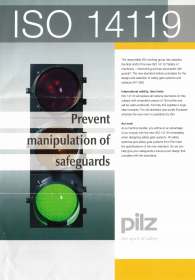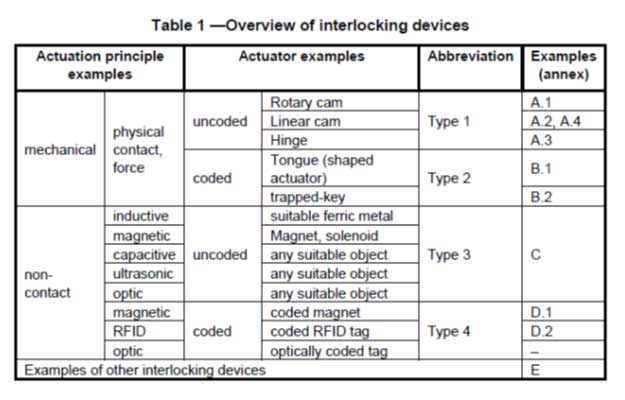
EN ISO 14119:2013, new standard for guard interlocking devices
Pilz Automation Technology
EN ISO 14119:2013, 'Safety of machinery - Interlocking devices associated with guards - Principles for design and selection', has been harmonised to the Machinery Directive 2006/42/EC and superseded its predecessor, EN 1088, on 30 April 2015. David Collier CMSE, Business Development Manager with Pilz Automation Technology, highlights the main changes to be aware of.
There are too many detailed technical differences between EN 1088 and EN ISO 14119 to be detailed here, but what follows highlights some of the most important changes.
Readers should also be aware that ISO published ISO/TR 24119, Safety of machinery - Evaluation of fault masking serial connection of interlocking devices associated with guards with potential free contacts, on 15 November 2015, and this provides useful guidance relating to Diagnostic Coverage (DC) and fault masking probabilities. See below for more information about ISO/TR 24119.
Differences between EN ISO 14119 and EN 1088
Compared with its predecessor, EN ISO 14119 (and its equivalent in the UK, BS EN ISO 14119) considers additional technologies such as RFID or electromagnetic guard locking, classifies interlocking switches and regulates more clearly the specifications for installing guards. These new points are particularly significant with regard to protection against guard manipulation, also known as defeating of guards.
International standard ISO 14119 for guard interlocks will replace all national standards on this subject (such as BS EN 1088 in the UK) and will be valid worldwide (it is, of course, referred to as EN ISO 14119:2013 in Europe). Formally this signifies a huge step forwards: EN 1088 was purely European, whereas ISO 14119:2013 (which is identical to EN ISO 14119:2013), is published by ISO, the International Standards Organisation.
Types of interlocking device
The first point is that EN ISO 14119 takes into account many technologies which were not available when EN 1088 was first published. The table below provides an overview of the interlocking device types and gives a helpful cross-reference to the examples in the annex of the standard. Types 3 and 4 (non-contact devices, uncoded and coded, including inductive, magnetic, capacitive, ultrasonic, optic and RFID) did not exist in EN 1088, and examples of their use are given in Annex C and Annex D of EN ISO 14119.

Pilz Automation Technology
Gen 2016
...read more Annex
|
























